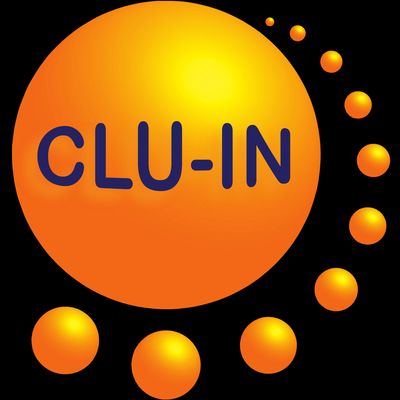Since 1998, The Contaminated Site Clean-Up Information (CLU-IN) website has presented Internet Seminars covering a wide variety of technical topics related to hazardous waste characterization, monitoring, and remediation. For select seminar topics offered since 2012, we are making complete video recordings available through our archives. This feed contains all video seminars archived in the last 12 months. For a complete list of seminars archived since 2000, please visit http://www.clu-in.org/live/archive/. Our Rehabilitation Act Notice for reasonable accommodation is available at http://www.clu-in.org/training/accommodation.cfm. CLU-IN was developed by the U.S. Environmental Protection Agency (EPA) but is intended as a forum for all waste remediation stakeholders. For more information and to view upcoming live offerings, please visit http://www.clu-in.org/live/. For a complete list of RSS feeds available on CLU-IN, please visit http://www.clu-in.org/rss/about/.
http://www.clu-in.org/live/archive
Gesamtlänge aller Episoden: 13 days 3 hours 21 minutes
Petroleum Vapor Intrusion: Fundamentals of Screening, Investigation, and Management (Sep 25, 2018)
Chemical contaminants in soil and groundwater can volatilize into soil gas and migrate through unsaturated soils of the vadose zone. Vapor intrusion (VI) occurs when these vapors migrate upward into overlying buildings through cracks and gaps in the building floors, foundations, and utility conduits, and contaminate indoor air. If present at sufficiently high concentrations, these vapors may present a threat to the health and safety of building occupants...
Geospatial Analysis for Optimization at Environmental Sites (Sep 20, 2018)
Optimization activities can improve performance, increase monitoring efficiency, and support contaminated site decisions. Project managers can use geospatial analysis for evaluation of optimization opportunities. Unlike traditional statistical analysis, geospatial methods incorporate the spatial and temporal dependence between nearby data points, which is an important feature of almost all data collected as part of an environmental investigation...
Geophysical Classification for Munitions Response (Sep 18, 2018)
For decades, the U.S. Department of Defense (DOD) has produced and used military munitions for live-fire testing and training to prepare the U.S. military for combat operations. As a result, unexploded ordnance (UXO) and discarded military munitions may be present at over 5,200 former ranges and former munitions operating facilities throughout the United States...
Characterization and Remediation of Fractured Rock (Sep 11, 2018)
Characterization and remediation of contaminated groundwater in fractured rock has not been conducted or studied as broadly as groundwater at unconsolidated porous media sites. This unfamiliarity and lack of experience can make fractured rock sites perplexing. This situation is especially true in portions of the U.S. where bedrock aquifers are a primary source of drinking and process water, and demands on water are increasing...
Superfund Research Program Progress in Research Webinar Part 3: Columbia University, Massachusetts Institute of Technology, and University of Rhode Island (Sep 10, 2018)
This Superfund Research Program (SRP) Progress in Research webinar series highlights promising research from SRP Centers awarded grants in 2017. In this session, awardees from Columbia University, Massachusetts Institute of Technology, and University of Rhode Island will describe their research projects, accomplishments, and next steps. The Columbia University SRP Center conducts research that aims to understand and reduce arsenic exposure and toxicity in humans exposed to arsenic in the U.S...
NARPM Presents?Tools for Estimating Groundwater Contaminant Flux to Surface Water (Sep 5, 2018)
Surface water bodies adjacent to sites with contaminated groundwater may receive impacts that impair otherwise functional ecosystems and create new exposure pathways, increasing human health risks. Optimizing site characterization protocols to improve the remedy design effort is best achieved by developing knowledge of the potential extent and magnitude of contaminated groundwater discharge into the surface water body...
Superfund Research Program Progress in Research Webinar Part 2: University of Louisville, University of New Mexico, and University of Washington (Sep 4, 2018)
This Superfund Research Program (SRP) Progress in Research webinar series highlights promising research from SRP Centers awarded grants in 2017. In this session, awardees from University of Louisville, University of New Mexico, and University of Washington will describe their research projects, accomplishments, and next steps. The University of Louisville SRP Center studies the cardiometabolic effects of volatile organic chemicals (VOCs) that are of high relevance to human health...
NARPM Presents...Utilizations of the U.S. EPA - Environmental Response Team's Mobile Trace Atmospheric Gas Analyzer Laboratories to Address Environment Issues (Aug 30, 2018)
The U.S. EPA Environmental Response Team's (ERT) Trace Atmospheric Gas Analyzer (TAGA) mobile laboratories have been utilized for numerous and varied monitoring and analysis operations. Over the years, the TAGA laboratories have been employed at traditional emergency responses, including chemical plant explosions, train derailments, pipeline breaks, oil spills, floods, hurricanes, etc...
Vapor Intrusion (VI) Investigation using the Trace Atmospheric Gas Analyzer (TAGA) Mobile Laboratories (Aug 29, 2018)
Vapor intrusion has been a topic of intense interest in the United States for the recent past. The concern that the vapor intrusion pathway poses is whether an unacceptable risk exists for the occupants. To determine the risk associated with the vapor intrusion pathway, confounding factors due to the presence of these chemical from other sources need to be qualitatively and quantitatively identified so that the contributions from the vapor intrusion alone can be assessed...
Superfund Research Program Progress in Research Webinar Part 1: Duke University and University of Arizona (Aug 23, 2018)
This Superfund Research Program (SRP) Progress in Research webinar series highlights promising research from SRP Centers awarded grants in 2017. In this session, awardees from Duke University and University of Arizona will describe their research projects, accomplishments, and next steps. The Duke University SRP Center focuses on early, low-dose exposures to toxicants and developmental impacts, which are usually evident only later in life...
